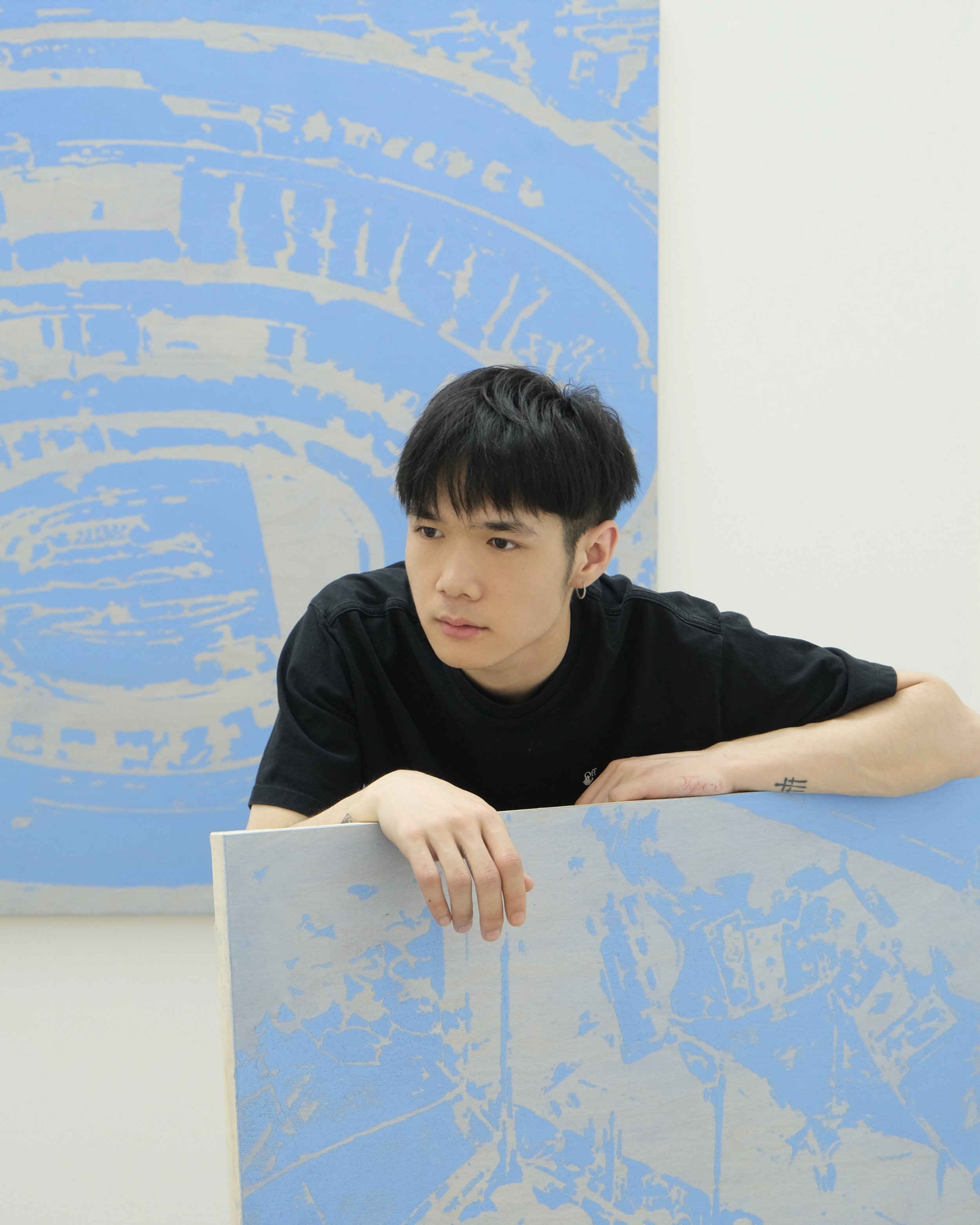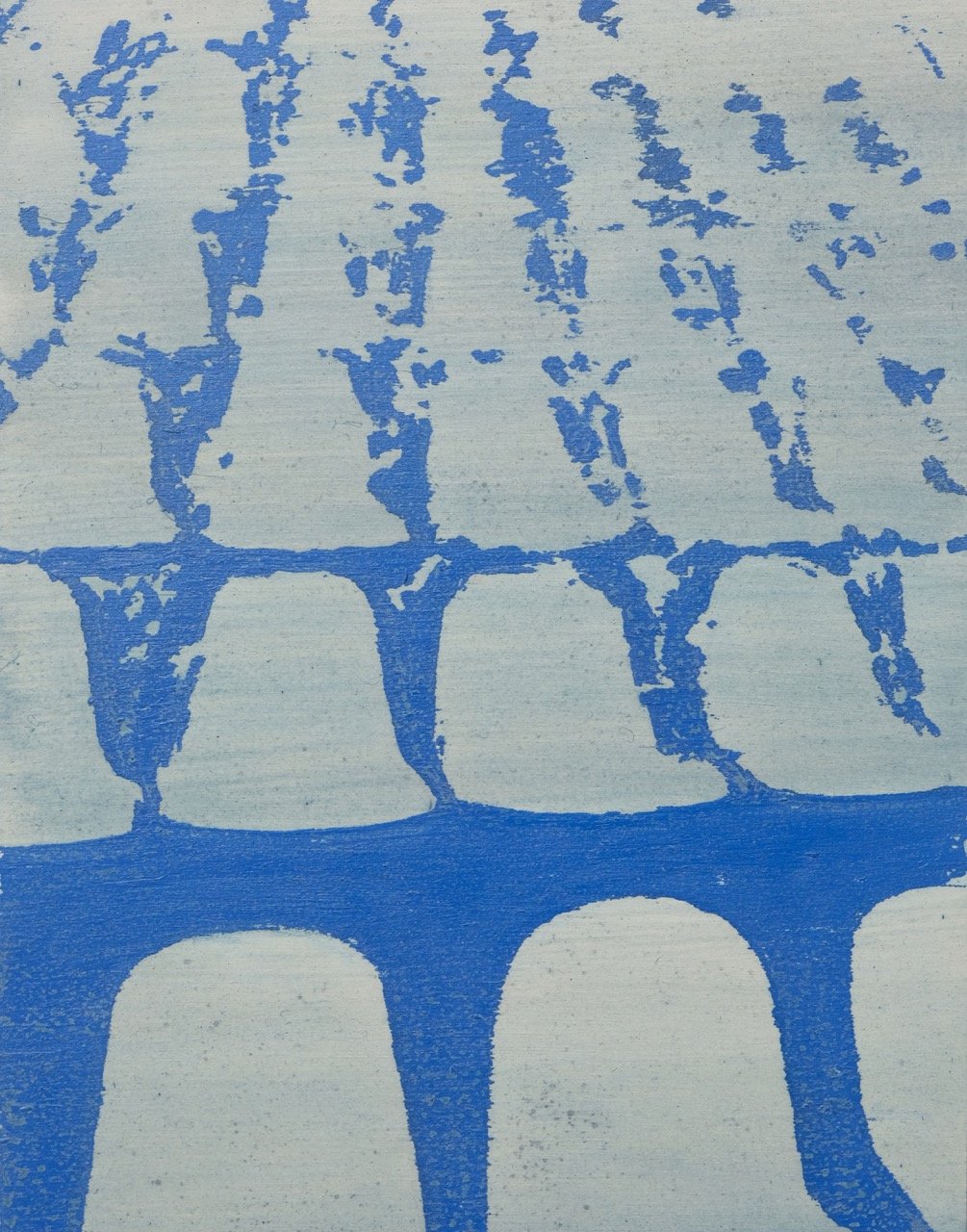Changpeng Li
Artist @oxoiso uses @oisoxo as a battlefield against popular images*
Changpeng Li, a graduate of the Royal College of Art, is fascinated by iconography, which he divides into three branches: painting, photography, and moving images. This interest stems from his daily interaction with visual content on the Internet. Unlike the old days of newspapers and TV, the online world exposes us to a broader range of images, some valuable and meaningful, others trivial and absurd.
Changpeng Li.
Among the flooded visual streams, Li's main curiosity centres around popular images such as advertisements and Internet memes that seem humorous but hold hidden meanings that only careful observers can grasp. Fascinated by how images can actually refer to reversed connotations while covered by their obvious meaning, Li also only uses plain patterns that he retrieves from daily life but alludes to concealed societal problems.
Left: My Mind on the Highway, 2023. Oil stick on wooden panel, 40 × 50 cm. Right: My Mind Set Me Free, 2023. Oil stick on wooden panel, 40 × 50 cm.
Li draws his deepest reflections and artistic inspiration from visual content on social media. To him, social media is like a constantly illuminated room where one's private feelings can't be openly conveyed due to constant public exposure. While many of us experience anxiety and sadness, most online images portray perfect, joyful scenarios. There appears to be a standard of sharing only cheerful, flawless moments, creating a facade of happiness that lacks genuine emotion. Li resists this trend by incorporating empty space in his paintings, turning positives into negatives. He wants to replace the performative nature of social media with blank areas in his art.
Trapping Us inside Monitors, 2023. Oil stick on wooden panel, 28 × 36 cm.
His Instagram accounts names, "@oxoiso" and "@oisoxo," cleverly play with mathematical equations (0×0=0, and 0=0×0) inspired by the myth of Sisyphus. This myth symbolises the ceaseless grind of daily life, where we strive tirelessly yet achieve little. In this era, individuals willingly subject themselves to unending self-improvement, chasing productivity and success, or as the philosopher Byung-Chul Han labels it, "self-exploitation." Such a lifestyle provides a false sense of freedom, masking the burden of constant pursuit. In the end, we might be just over-exhausted, with no real accomplishment.
Mirages and Mirages Dissolve into Mirages, 2023. Oil stick on wooden panel, 40 × 50 cm.
Initially, Li deals with the commonly experienced anxiety by using coffee as his creative medium. For him, coffee is the symbol of the proactive attitudes of diligent workers who use caffeine to wake themselves up from the start of the day. But now, he shifted from the coffee monochrome to bright, vivid colours, mirroring the style of modern advertising. This choice of palette compromises with the capitalist advertising system, in which images need to compete for attention within a confined timeframe, often using vibrant hues to stand out in monotonous urban settings.
⅐, 2022. Coffee, charcoal, ink on canvas, 20 × 15 cm (L) and 10 × 15 cm (R).
Li's creative process begins with gathering online fragments, which act as drafts for his paintings. After reconceiving these images using digital tools, he transfers them onto canvas or board. At this stage, his preferred medium is oil stick, a malleable material resembling damp clay. He intentionally flattens the textured brushstrokes to mirror the smooth, flat surface of screens for the display of digital imagery, blurring the lines between reality and the virtual world.
Simulacra, 2023. Oil stick on wooden panel, 150 × 120 cm.
Li's choice of wooden panels as a canvas is motivated by his inclination towards blank space. These panels, with their subtle textures, interact with the interspersed areas of blank space, creating a delicate interplay between the colours. This texture adds depth, prompting viewers to analyse layers and meanings. The effect encourages a thoughtful viewing experience, disrupting the conventional way we perceive images.
In particular, Luc Tuymans influenced Li’s art in the early stages of his career. Rendered in a muted coloured palette, Tuymans’ painting uses found images from a range of sources including the popular media. Inspired by this approach, Li strives to shed light on underlying life issues through intriguing visuals, prompting introspection.
Li's artistry is a battle against popular images. In an age dominated by social media's glamorous portrayal of ideal lives, constant anxiety accompanies the facade. Li's art fundamentally serves as a countermeasure, transforming images into calm and distant representations, gradually revealing their true essence.
Preset, 2023. Oil stick on wooden panel, 90 × 120 cm.









